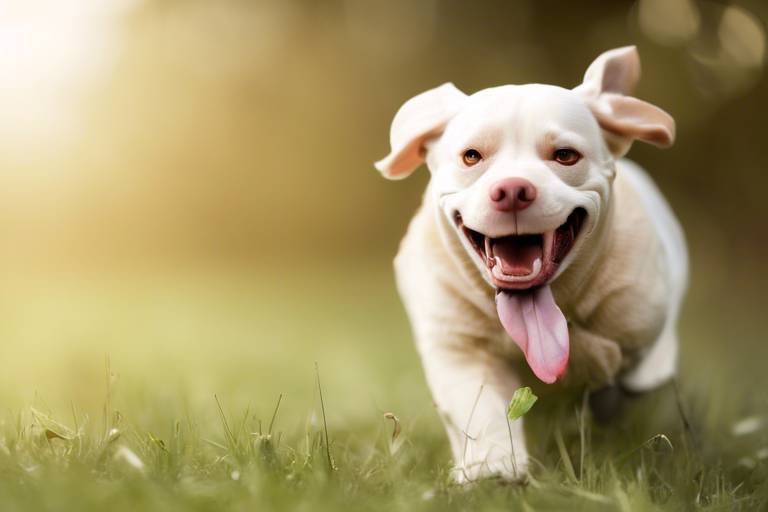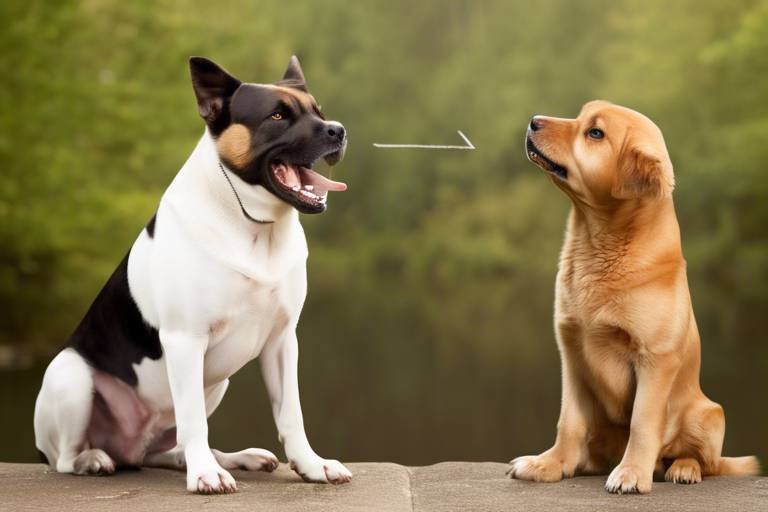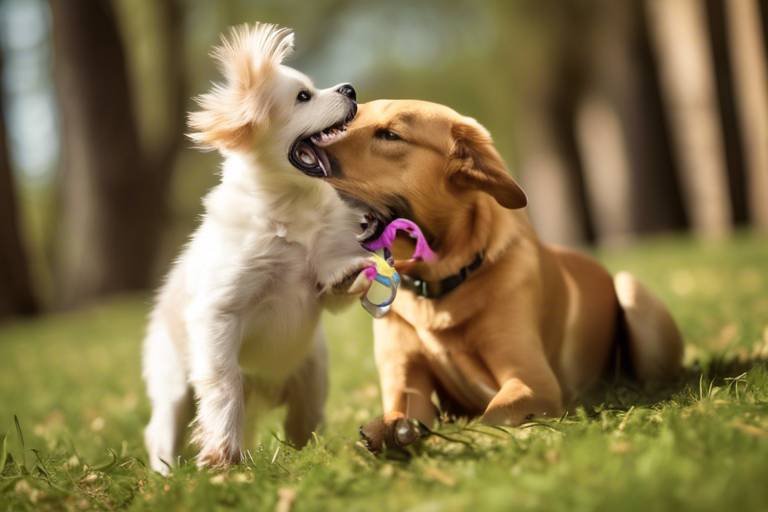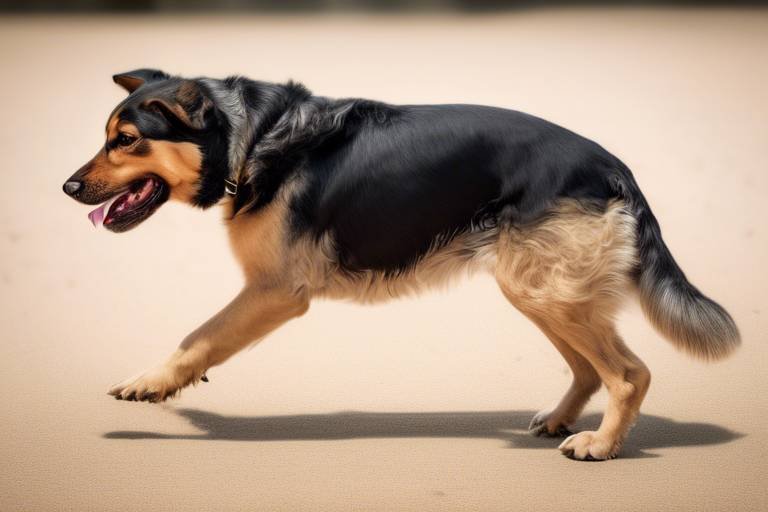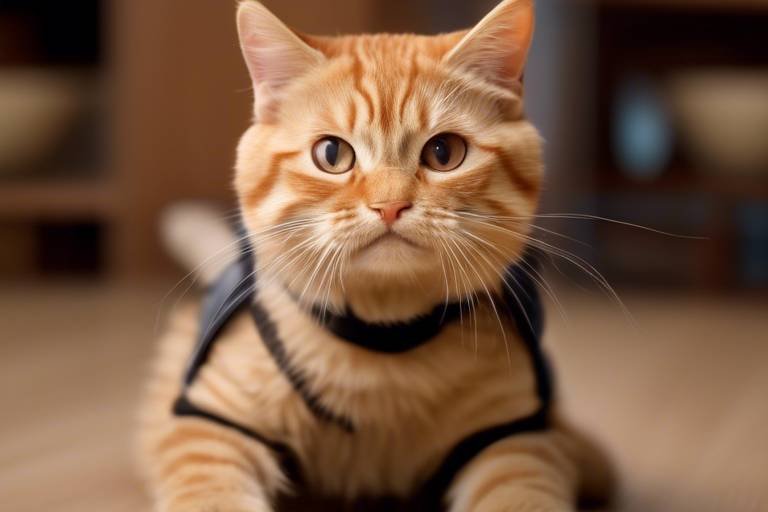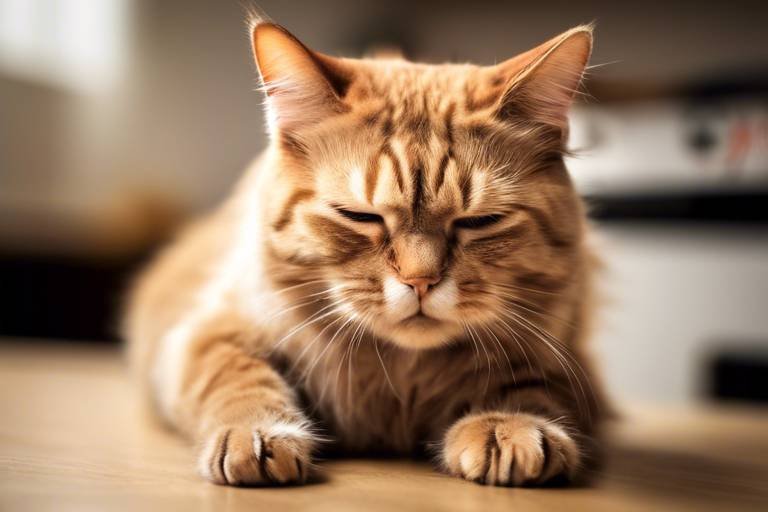Tips for Managing Fear of Loud Noises in Pets
As pet owners, we often find ourselves in a tough spot when our furry friends become anxious during thunderstorms or fireworks. It's heartbreaking to see them trembling, hiding, or even trying to escape. Thankfully, there are practical strategies to help our pets cope with their fear of loud noises. In this article, we’ll explore various methods to manage your pet's anxiety, ensuring they feel safe and secure during those frightening moments. So, let’s dive into the world of noise sensitivity and learn how to create a more peaceful environment for our beloved companions.
To tackle the issue of noise sensitivity in pets, it's essential to understand why they react the way they do. Just like humans, pets can inherit a predisposition to anxiety from their parents. Some breeds, such as Collies and Boxers, are more prone to noise sensitivity due to their genetic makeup. Additionally, past experiences can play a significant role. A pet that has had a traumatic experience with loud noises, like being caught in a thunderstorm, may develop a lasting fear. Recognizing these factors can help us approach their anxiety with empathy and patience.
Being able to identify the signs of fear in your pet is crucial for effective management. Common behaviors that indicate anxiety include:
- Shaking or trembling
- Hiding or seeking shelter
- Excessive barking or whining
- Pacing or restlessness
- Destructive behavior
Understanding these signs can help you respond quickly and appropriately, providing comfort and support when your pet needs it most.
One of the most effective ways to alleviate your pet's anxiety is to create a safe haven. This can be a cozy corner in your home where they feel secure. Consider the following tips for designing this space:
- Use their favorite blankets or toys to make the area inviting.
- Ensure the space is away from windows and loud noises.
- Add a comfortable bed or crate where they can retreat.
By establishing a safe space, you give your pet a sanctuary to escape to during loud events, helping to minimize their stress.
Desensitization is a gradual process that can help your pet become more accustomed to loud sounds over time. Start by playing recordings of thunder or fireworks at a low volume while engaging your pet in positive activities, such as playing or offering treats. Gradually increase the volume as they become more comfortable. This technique helps them associate loud noises with positive experiences rather than fear. Remember, patience is key; this process may take weeks or even months.
There are various calming products available that can assist in managing your pet's fear of loud noises. Some popular options include:
- Pheromone diffusers that release calming scents.
- Anxiety wraps that provide gentle pressure, similar to a hug.
- Calming treats formulated to reduce anxiety.
These products can be effective tools in your arsenal, helping to soothe your pet during stressful times.
Training your pet can significantly impact their response to loud noises. Positive reinforcement techniques can create good associations with sounds that typically frighten them. For example, reward your pet with treats and praise when they remain calm during a thunderstorm or when you play loud noises at a low volume. This method not only builds their confidence but also strengthens your bond with them.
If your pet's fear of loud noises becomes severe, it may be time to consult a veterinarian. They can assess your pet's situation and recommend potential medical interventions or behavioral therapies. In some cases, medication may be necessary to help your furry friend cope. Remember, seeking professional help is a proactive step toward ensuring your pet's well-being.
Having a comprehensive noise management plan can significantly ease your pet's anxiety. This plan should include preparation for loud events, such as:
- Identifying potential triggers, like fireworks holidays.
- Creating a safe space ahead of time.
- Gathering calming products and ensuring they are easily accessible.
By being proactive, you can help your pet feel more secure during noisy situations.
Your presence can be incredibly comforting for your pet during loud events. Stay close to them, speak softly, and engage in calming activities, like gentle petting or providing their favorite toys. It’s essential to remain calm yourself; pets can pick up on your emotions. By offering reassurance and support, you can help your pet navigate their fear more effectively.
Q: Can all pets be trained to overcome their fear of loud noises?
A: While many pets can learn to manage their fear through training and desensitization, some may require professional help or medication. Every pet is unique, and their response to training may vary.
Q: How long does it take for a pet to get used to loud noises?
A: The desensitization process can take weeks or months, depending on the individual pet's temperament and previous experiences. Patience and consistency are crucial.
Q: Are calming products safe for all pets?
A: Most calming products are safe, but it’s always best to consult your veterinarian before introducing new products, especially if your pet has underlying health issues.
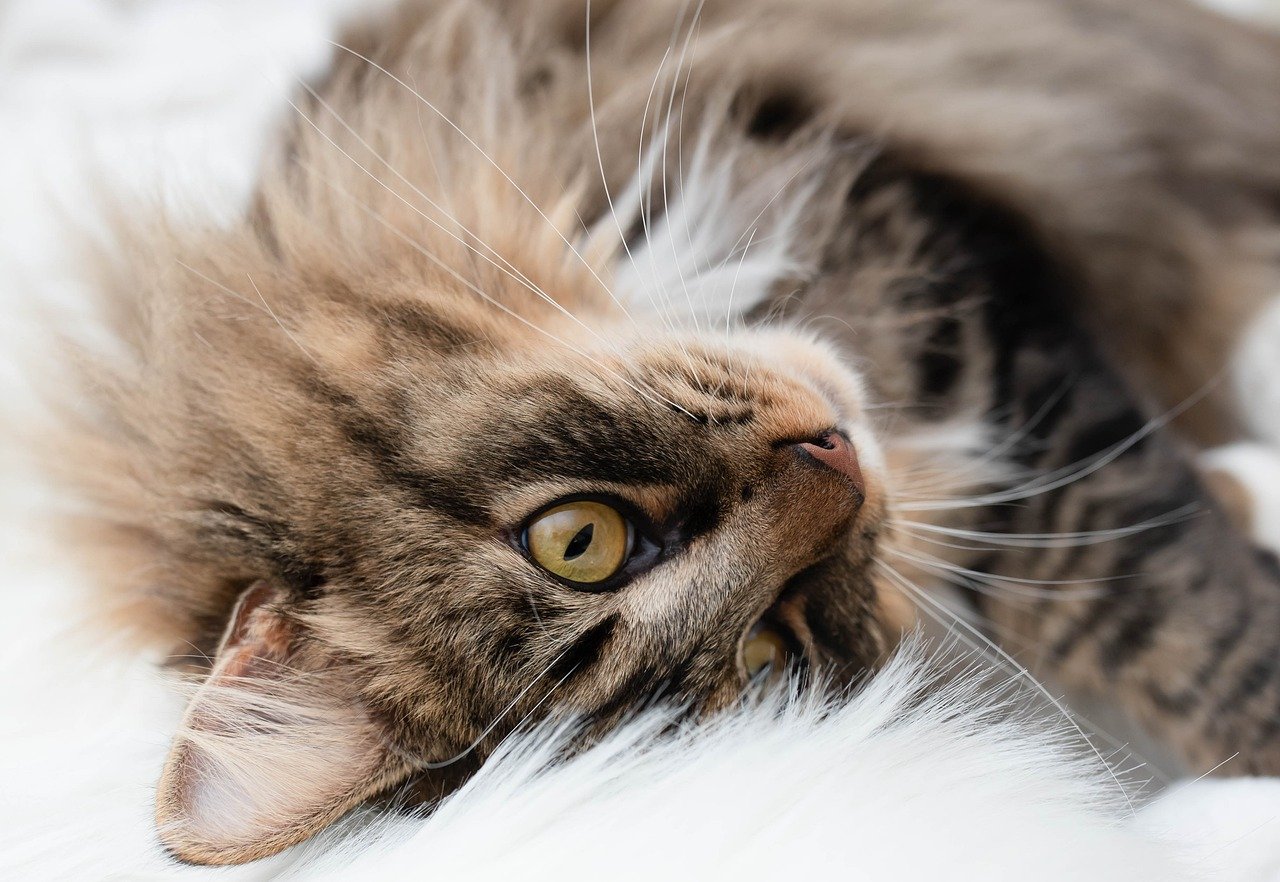
Understanding Noise Sensitivity
When it comes to our furry friends, understanding their noise sensitivity can feel like unraveling a mystery. Why do some pets tremble at the sound of thunder while others seem unfazed? The answer lies in a combination of genetic predispositions and past experiences. Just like humans, pets can inherit traits that make them more vulnerable to stress and anxiety. For instance, certain breeds, such as herding dogs and toy breeds, are often more sensitive to loud noises due to their heightened instincts and alertness.
Additionally, a pet's history plays a significant role in their reaction to noise. If a dog or cat has had a traumatic experience associated with loud sounds—like fireworks or thunderstorms—they may develop a lasting fear. Imagine if you had a frightening experience during a thunderstorm; you would likely feel anxious every time the sky darkened. Similarly, pets can develop a conditioned response to loud noises, making them feel trapped in a cycle of fear.
Moreover, age and health can also influence how a pet reacts to noise. Older animals may experience hearing loss, which can make sudden loud noises even more startling. On the other hand, pets with underlying health issues might be more susceptible to anxiety, making them react more intensely to loud sounds. Understanding these factors is crucial for pet owners, as it allows them to tailor their approach to each animal's unique needs.
To further illustrate the complexities of noise sensitivity, consider the following table:
| Factor | Impact on Noise Sensitivity |
|---|---|
| Genetic Predisposition | Some breeds are naturally more anxious and reactive to loud noises. |
| Past Traumatic Experience | Negative experiences can lead to a long-lasting fear of similar sounds. |
| Age | Older pets may startle more easily due to changes in hearing. |
| Health Issues | Underlying conditions can heighten anxiety and sensitivity to noise. |
In conclusion, understanding the factors that contribute to your pet's noise sensitivity is the first step in helping them cope with their fears. By recognizing the signs and being aware of their individual backgrounds, you can create a more supportive environment that reduces their anxiety during loud events. After all, a little empathy goes a long way in easing your pet's worries!
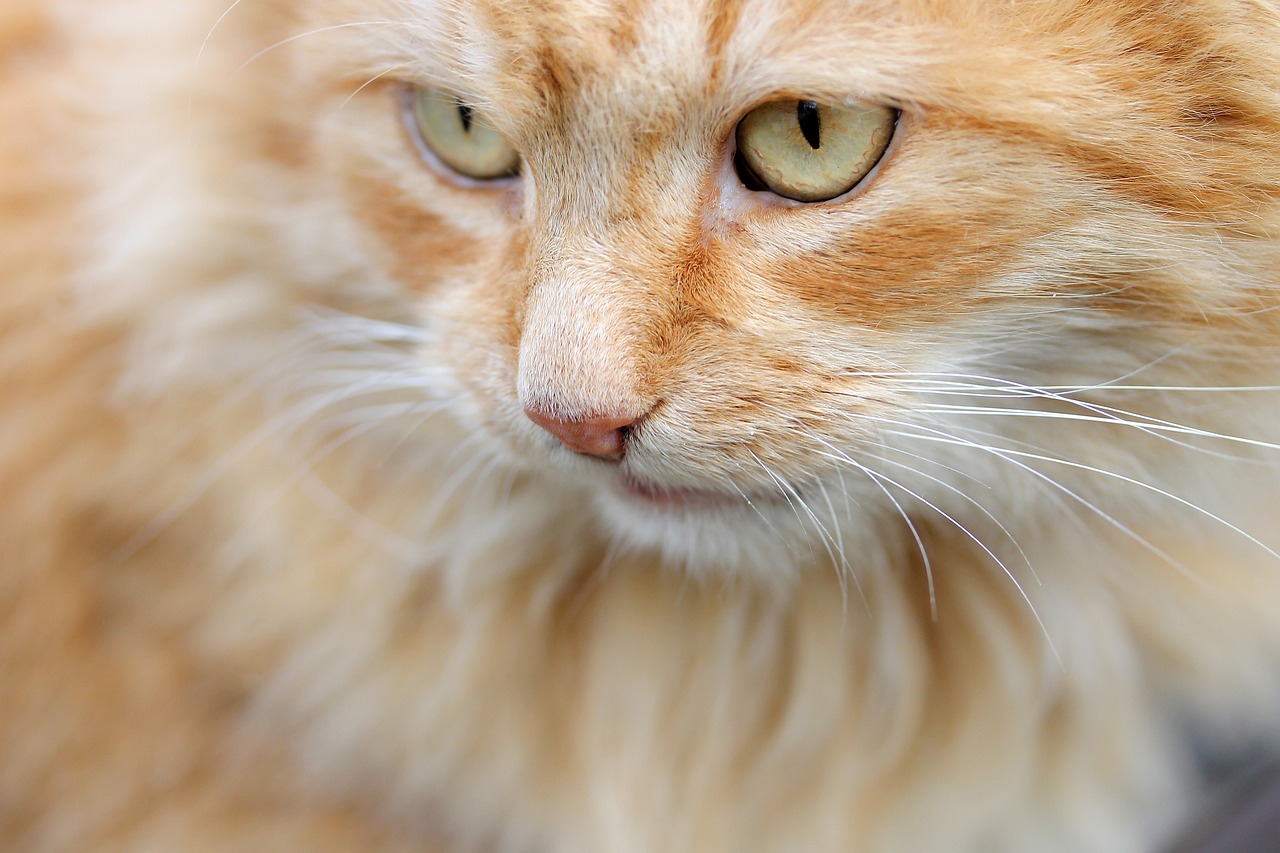
Recognizing Signs of Fear
Recognizing the signs of fear in your pet is crucial for addressing their anxiety effectively. Just like humans, animals express their emotions, and understanding these signals can make a world of difference in how you respond to their needs. Imagine walking into a room filled with thunderous applause; while some people may thrive in that environment, others might feel overwhelmed and anxious. Your furry friends are no different! When faced with loud noises, such as thunderstorms or fireworks, they may exhibit a variety of behaviors that signal their distress.
Common signs of fear in pets can include:
- Hiding: If your pet suddenly seeks refuge under the bed or in a closet, it's a clear indication that they are trying to escape the noise.
- Shaking or Trembling: Physical manifestations like shaking can be a telltale sign of anxiety, and it's often accompanied by other behaviors.
- Excessive Barking or Whining: Vocalizations can increase when pets are scared. If your dog is barking or your cat is meowing unusually, they might be expressing their fear.
- Avoidance: Pets may try to distance themselves from the source of the noise, often resulting in them trying to leave the room or hiding behind furniture.
- Pacing: If you notice your pet walking back and forth, it could indicate restlessness and anxiety.
Additionally, some pets may exhibit more subtle signs, such as wide eyes, pinned ears, or a tucked tail. These behaviors can be easily overlooked, especially if you're not familiar with your pet's usual demeanor. It's important to be observant and recognize these changes in behavior. For instance, if your normally playful pup suddenly becomes withdrawn or your cat, who usually lounges around, is now hiding, it's time to take a closer look at their emotional state.
In severe cases, pets may even resort to destructive behaviors, such as scratching furniture or attempting to escape from their environment. This is not just a cry for help; it's a desperate attempt to cope with their fear. Understanding these signs allows you to intervene early, providing comfort and support to your beloved pet during those loud and frightening moments.
In conclusion, being aware of the signs of fear in your pets is the first step in helping them navigate their anxiety. By recognizing these behaviors, you can take proactive measures to create a more secure environment for them and implement strategies to help them cope with their fears. Remember, your pet looks to you for guidance and reassurance, especially when they feel scared and vulnerable.
Q: How can I tell if my pet is afraid of loud noises?
A: Look for signs such as hiding, shaking, excessive vocalization, and avoidance behaviors. If your pet's behavior changes during loud events, they may be experiencing fear.
Q: What should I do if my pet shows signs of fear during a thunderstorm?
A: Create a safe space for them, use calming products, and stay close to provide comfort. It's also helpful to distract them with toys or treats.
Q: Can desensitization help my pet overcome their fear of loud noises?
A: Yes! Gradual exposure to the sounds that scare them, in a controlled and positive way, can help them become more accustomed to those noises over time.
Q: When should I consult a veterinarian about my pet's fear?
A: If your pet's fear is severe and affecting their quality of life, it's time to consult a veterinarian for advice on behavioral therapies or medications.

Creating a Safe Space
When it comes to helping your pet cope with the anxiety caused by loud noises, creating a safe space is absolutely essential. Think of this space as a cozy little sanctuary where your furry friend can retreat and feel secure during thunderstorms, fireworks, or any other loud events. Just like we seek refuge in our favorite spots when we feel overwhelmed, pets crave a similar sense of safety. So, how can you transform a corner of your home into a haven for your beloved companion?
First and foremost, choose a location that is as far away from the source of the noise as possible. This could be a quiet room in the basement or a snug area in the back of your house. Ideally, this space should be outfitted with your pet's favorite items, such as their bed, blankets, and toys. Familiar scents can work wonders in calming anxious pets, so don’t hesitate to include items that carry your scent or that of other family members.
Next, consider the ambiance of this safe space. You want it to be inviting and comforting. Dim lighting can help create a soothing environment, while soft music or white noise can mask the sounds of external chaos. If your pet enjoys a particular type of music, play it softly in the background to provide an additional layer of comfort. You might even want to incorporate some calming scents using pet-safe essential oils or sprays designed to reduce anxiety.
Another important aspect of creating a safe space is ensuring it is free from any potential disturbances. Close windows and doors to block out noise, and consider using heavy curtains or blankets to further soundproof the area. If your pet is crate-trained, their crate can serve as a perfect safe haven. Just make sure it’s lined with soft bedding and has some toys to keep them occupied.
Don't forget to make this space a positive experience for your pet. You can do this by gradually introducing them to the area when there are no loud noises. Spend time with them there, offering treats and praise, so they associate this space with comfort and safety. If your pet is hesitant at first, be patient. It might take some time for them to feel at ease, but your encouragement will go a long way.
In summary, creating a safe space for your pet involves a combination of location, comfort, ambiance, and positive reinforcement. By investing time and effort into this sanctuary, you’re not just providing a physical space; you’re offering emotional support that can help your pet navigate their fears. Remember, the goal is to make this area a refuge, where your pet can feel secure and relaxed during those loud, anxiety-inducing moments.
- How can I tell if my pet is using their safe space?
Look for signs such as your pet voluntarily going to the area during loud events or spending time there when they feel anxious. - What should I include in my pet's safe space?
Include their bed, favorite toys, blankets, and anything that smells like you to create a comforting environment. - Can I use calming products in the safe space?
Absolutely! Calming products like pheromone diffusers can enhance the soothing atmosphere of their safe space. - How long should I keep the safe space available?
It’s best to keep the safe space available at all times so your pet can use it whenever they feel the need.
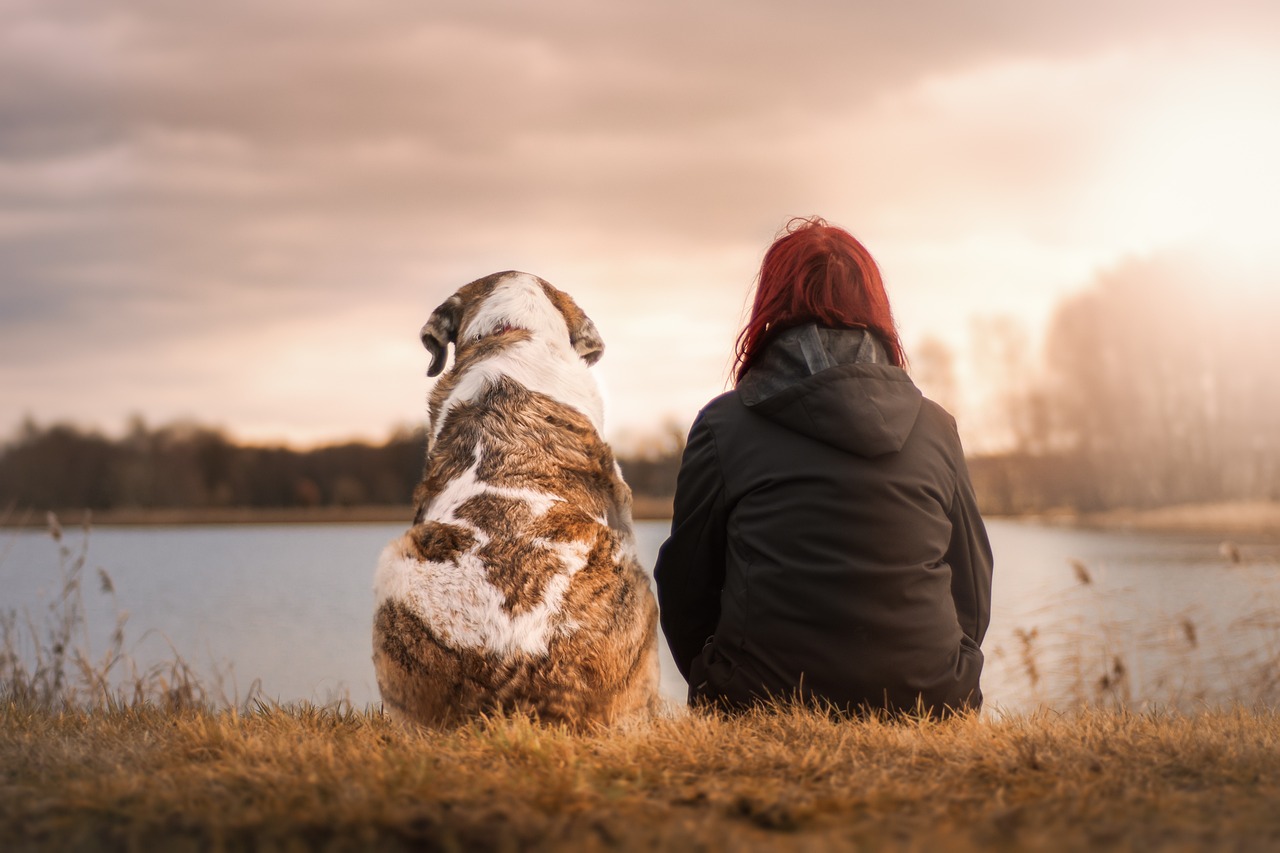
Desensitization Techniques
Desensitization is a powerful tool in helping our furry friends cope with the anxiety that loud noises can bring. Think of it like slowly introducing a friend to a roller coaster—at first, they might be terrified, but with gradual exposure, they can learn to enjoy the ride! The key is to start small and build up their tolerance over time. For instance, you might begin by playing a recording of thunder or fireworks at a very low volume while engaging your pet in a favorite activity, like playing with a toy or enjoying a treat.
As your pet becomes more comfortable with the low volume, gradually increase the sound level over several sessions. This process allows them to associate the noise with positive experiences rather than fear. It’s essential to monitor their reactions closely. If they show signs of distress, it’s crucial to dial back the volume and give them time to adjust. Remember, patience is vital! Each pet is unique, and what works for one may not work for another.
Another effective method is to incorporate counter-conditioning. This technique involves changing your pet's emotional response to the noise. For instance, when the sound begins, you can provide them with a high-value treat or their favorite toy. Over time, they will start to associate the previously frightening noise with something positive, making them less anxious. You can also use calming music or white noise to help mask the loud sounds during this training process.
Consistency is key! Make desensitization a regular part of your pet's routine. Schedule short sessions multiple times a week, and keep them fun and engaging. You might also consider using a clicker to mark positive behavior during these sessions. This can reinforce the idea that being calm in the face of noise leads to rewards. The more you practice, the more confident your pet will become, and soon they'll be on their way to conquering their fear of loud noises!
Lastly, it’s important to remember that desensitization techniques can take time. Just like us, pets need time to adjust and learn. Celebrate small victories along the way, and don’t hesitate to seek advice from a professional trainer if you find yourself needing additional support. With love, patience, and the right techniques, you can help your pet navigate through the storm of loud noises.
- How long does desensitization take? The time varies by pet; some may show improvement in a few weeks, while others may take months.
- Can I use desensitization techniques for other fears? Absolutely! This method can be effective for various fears, not just noise-related ones.
- What if my pet doesn't respond to desensitization? If you notice little to no progress, consider consulting a veterinarian or a professional trainer for tailored advice.

Using Calming Products
When it comes to managing your pet's fear of loud noises, calming products can be a game changer. Think of these products as a comforting hug for your furry friend when the thunder rolls or fireworks light up the sky. There are numerous options available, each designed to help soothe anxious pets and create a sense of security. But with so many choices, how do you know which ones are effective?
First off, let’s talk about pheromone diffusers. These nifty devices release synthetic versions of the calming pheromones that mother dogs and cats produce to comfort their young. By mimicking these natural scents, pheromone diffusers can help create a tranquil environment, making your pet feel more at ease during stressful situations. Just plug it in and let the magic happen! However, it’s important to note that while many pet owners report positive results, the effectiveness can vary from one animal to another.
Another popular option is anxiety wraps. These wraps apply gentle, constant pressure to your pet’s body, similar to swaddling an infant. This snug feeling can significantly reduce anxiety levels, making it an excellent choice during loud events. Many pet owners have found success with products like the Thundershirt, which is designed specifically for this purpose. Just remember, while these wraps can be incredibly effective, it’s crucial to introduce them to your pet gradually to ensure they feel comfortable wearing them.
Additionally, you might want to consider calming treats. These treats are often infused with natural ingredients like chamomile, valerian root, or CBD oil, known for their relaxing properties. They can be a tasty way to help your pet unwind before a loud event. However, always consult your veterinarian before introducing any new supplements to your pet's diet, especially if they are on medication or have underlying health issues.
Of course, not all calming products work the same for every pet. It’s a bit like finding the perfect pair of shoes; what fits one might not fit another. Therefore, don’t hesitate to experiment with different options and combinations to see what works best for your furry companion. You could even create a little “calming kit” that includes a pheromone diffuser, an anxiety wrap, and some calming treats. This way, you’ll be ready for any noise-related challenge that comes your way!
In conclusion, using calming products can significantly aid in managing your pet's anxiety during loud noises. By exploring various options and observing your pet’s reactions, you can tailor a calming strategy that works best for them. Remember, the goal is to create an environment where your pet feels safe and secure, allowing them to weather the storm—literally and figuratively!
- What are pheromone diffusers, and how do they work? Pheromone diffusers release synthetic calming pheromones that help reduce anxiety in pets by mimicking the natural scents produced by mother animals.
- Are anxiety wraps safe for all pets? Generally, anxiety wraps are safe for most pets, but it’s always best to consult with your veterinarian, especially if your pet has any health concerns.
- Can calming treats be used with other anxiety products? Yes, calming treats can often be used in conjunction with other products like pheromone diffusers and anxiety wraps for enhanced effect.
- How long does it take for calming products to work? The effectiveness and onset time can vary depending on the product and the individual pet, but many see results within a short time frame.
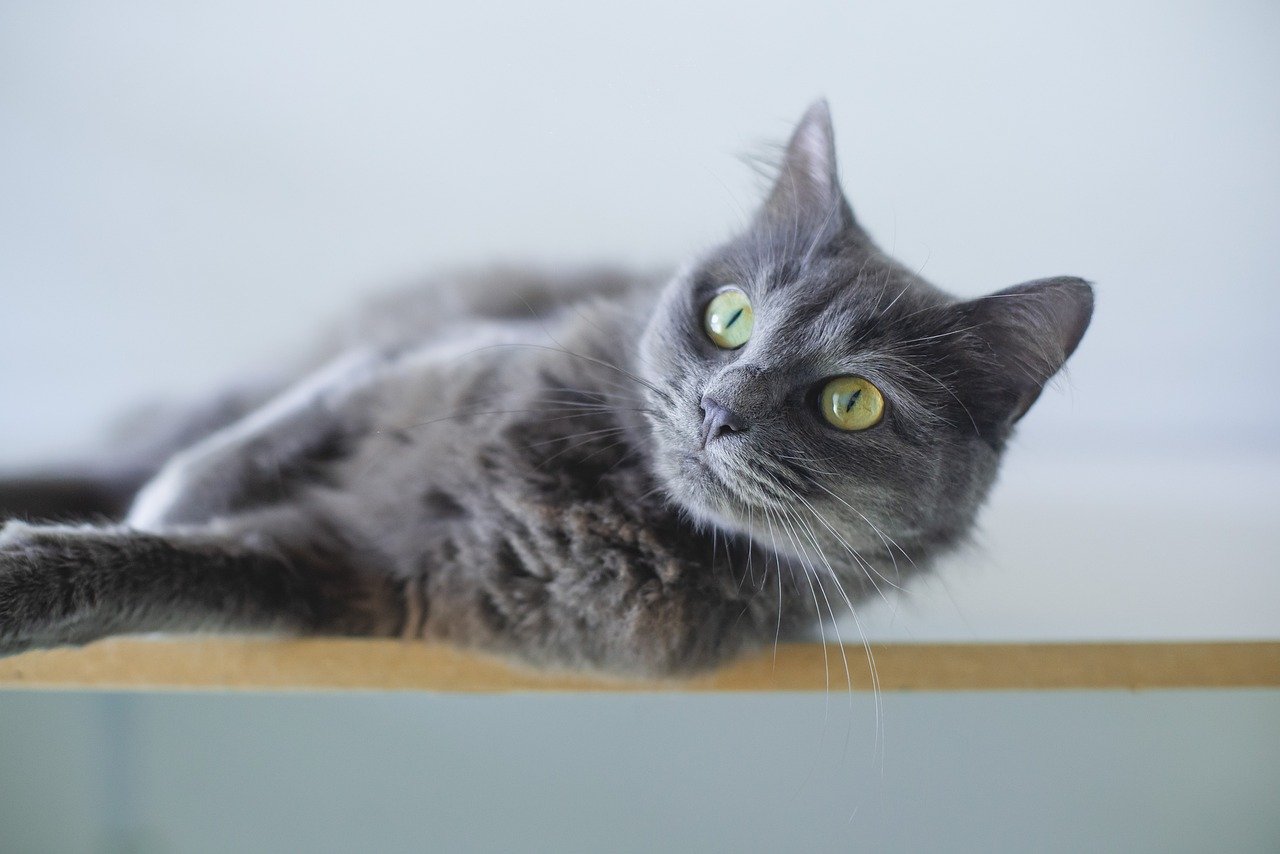
Behavioral Training Strategies
When it comes to managing your pet's fear of loud noises, can be incredibly effective. Just like humans, pets can learn to associate certain sounds with positive experiences, which can help alleviate their anxiety. Think of it as teaching your furry friend to view thunderstorms or fireworks not as terrifying monsters, but as just another part of life. The key here is patience and consistency.
One effective method is called counter-conditioning. This involves changing your pet's emotional response to a noise by pairing it with something they love. For example, if your dog is afraid of thunder, you might play a recording of thunder sounds at a very low volume while giving them their favorite treat or toy. Gradually increase the volume over time as your pet becomes more comfortable. This technique helps your pet learn that loud noises can lead to good things, rather than fear and anxiety.
It's also important to incorporate positive reinforcement into your training. Whenever your pet remains calm in the presence of a loud noise, reward them with praise, treats, or playtime. This reinforces the behavior you want to see and helps them understand that staying calm is the desired response. Remember, the goal is to create a positive association with the noise, so be generous with your rewards!
Another strategy is desensitization. This involves gradually exposing your pet to the sound that frightens them in a controlled manner. Start with a very low volume and slowly increase it over time, ensuring that your pet remains relaxed. You can use recordings of the sounds that scare them, such as fireworks or thunder, and play them at a distance or at a low volume while engaging in a fun activity. This helps them to gradually become accustomed to the noise without overwhelming them.
In addition to these techniques, consider using training aids such as anxiety wraps or calming music specifically designed for pets. These can help create a soothing environment during training sessions. You can even create a training schedule to keep track of your progress. Here’s a simple table to help you visualize your training plan:
| Week | Activity | Notes |
|---|---|---|
| 1 | Introduce low-volume sound | Reward calm behavior |
| 2 | Gradually increase volume | Continue rewarding |
| 3 | Introduce distractions (toys, treats) | Ensure positive experiences |
| 4 | Monitor response and adjust volume | Focus on calmness |
As you embark on this training journey, remember that every pet is unique. What works for one might not work for another, so be prepared to adapt your strategies as needed. Consistency, love, and understanding are your best allies in helping your pet overcome their fear of loud noises. And don’t forget, you’re not alone in this! Many pet owners face similar challenges, and sharing experiences can often lead to new insights and techniques.
- How long will it take for my pet to overcome their fear? The timeline varies by pet. Some may show improvement in a few weeks, while others may take months.
- Can I use medication in conjunction with training? Yes, consult your veterinarian for the best approach, as medication can sometimes assist in behavioral training.
- What if my pet doesn’t respond to training? If your pet shows little improvement, consider consulting a professional animal behaviorist for tailored strategies.
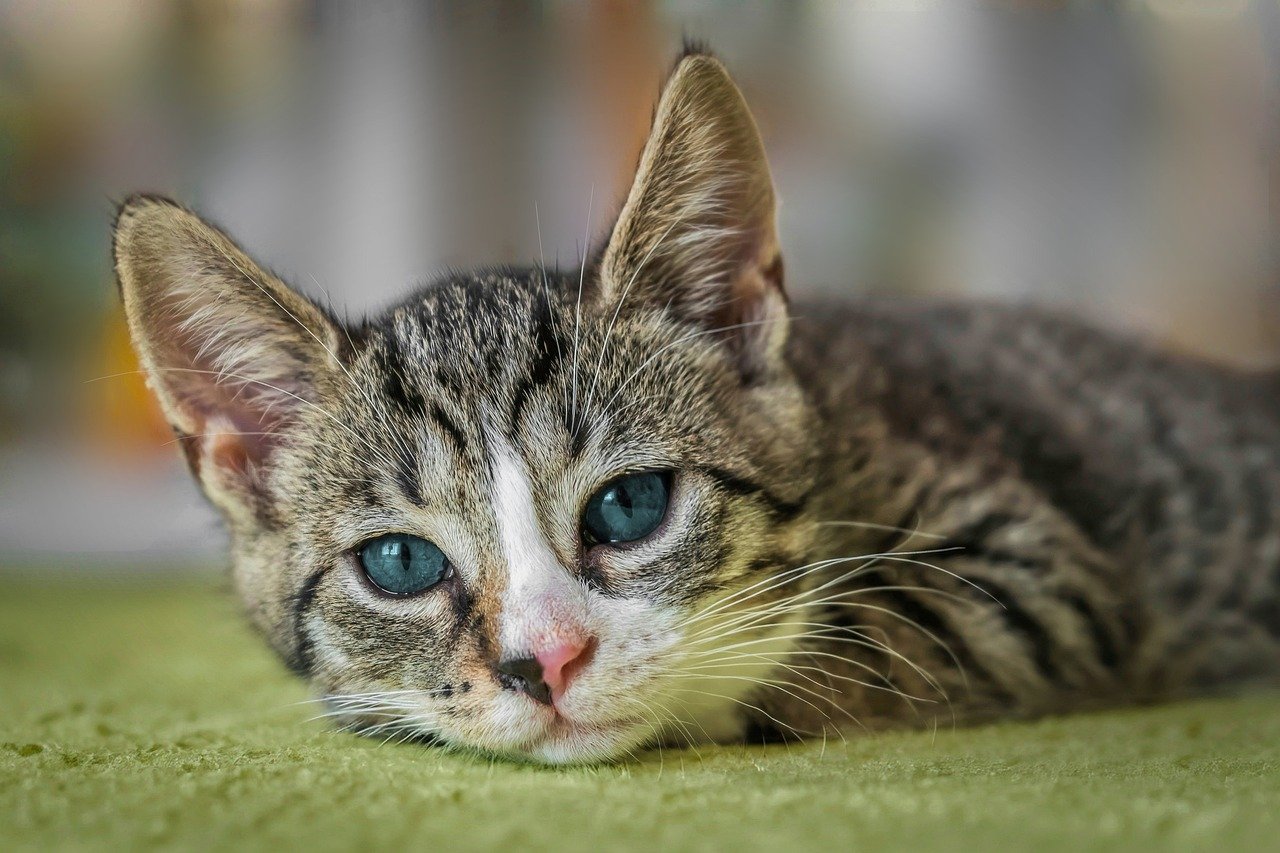
Consulting a Veterinarian
When your pet's fear of loud noises escalates beyond a manageable level, it's time to consider seeking professional help. Just like humans, pets can experience overwhelming anxiety that may require more than just comforting words or a favorite toy. Consulting a veterinarian can provide you with valuable insights and treatment options tailored to your pet's specific needs. Veterinarians are not only trained to assess physical health but also to understand behavioral issues, making them an essential resource in tackling noise-related anxiety.
During your visit, the veterinarian will likely conduct a thorough examination of your pet to rule out any underlying health issues that might be contributing to their anxiety. It's crucial to be open and honest about your pet's behavior. Have they shown signs of distress during thunderstorms or fireworks? Have you noticed any changes in their eating habits or daily routines? Documenting these behaviors can help your vet make a more informed diagnosis.
In some cases, the veterinarian may suggest a combination of behavioral therapies and medical interventions. These could include:
- Anti-anxiety medications: These can help reduce your pet's overall anxiety levels, making it easier for them to cope with loud noises.
- Behavioral therapy: This might involve working with a certified animal behaviorist to develop a tailored plan that addresses your pet's specific fears.
- Natural supplements: Some pets might benefit from natural calming aids, which can be discussed with your vet.
It's important to remember that every pet is unique, and what works for one may not work for another. Your veterinarian can help you navigate through the myriad options available, ensuring that you choose the best course of action for your furry friend. Additionally, they can provide guidance on how to implement desensitization techniques effectively and safely, allowing your pet to gradually become accustomed to the sounds that frighten them.
Moreover, regular follow-up appointments can be beneficial to monitor your pet's progress. This way, you can make necessary adjustments to their treatment plan based on how they respond. Don't hesitate to ask your veterinarian any questions you may have; after all, they are there to help both you and your pet navigate through these challenging situations.
In conclusion, consulting a veterinarian is a proactive step in managing your pet's fear of loud noises. With their expertise, you can develop a comprehensive approach that combines medical support and behavioral strategies, leading to a happier and more relaxed pet. Remember, you are not alone in this journey; your vet is an ally in ensuring your pet's emotional well-being.
Q: How can I tell if my pet's fear of loud noises is severe?
A: Signs of severe fear can include excessive barking, hiding, destructive behavior, or even physical symptoms like trembling or panting. If you notice these behaviors, it's time to consult a veterinarian.
Q: Are there specific breeds that are more prone to noise sensitivity?
A: Yes, some breeds are more genetically predisposed to anxiety. For example, herding breeds like Border Collies and certain toy breeds often show higher levels of noise sensitivity.
Q: Can I use over-the-counter medications for my pet's anxiety?
A: It's best to consult with your veterinarian before administering any medication. They can recommend safe and effective options tailored to your pet's needs.
Q: How long does it take for a pet to adjust to desensitization techniques?
A: The timeline varies significantly depending on the pet and the severity of their fear. Some pets may show improvement in a few weeks, while others may require months of consistent training.

Creating a Noise Management Plan
When it comes to our furry companions, being proactive is key, especially when dealing with their fear of loud noises. A well-thought-out Noise Management Plan can be a game-changer, transforming a chaotic thunderstorm or a booming fireworks display into a manageable experience. Think of it as a roadmap that guides you and your pet through the stormy seas of noise anxiety. So, how do you create one? Let’s dive in!
First and foremost, it’s essential to assess your pet's specific triggers. Is it the crack of thunder, the pop of fireworks, or perhaps the roar of a vacuum cleaner? Keeping a noise diary can be beneficial. Note the types of sounds that provoke anxiety and the corresponding behaviors exhibited by your pet. This will help you tailor your plan to address their unique sensitivities. For instance, if your dog trembles during thunderstorms but remains calm during fireworks, your strategies will differ for each scenario.
Next, consider the environment. Creating a safe haven for your pet is crucial. This space should be cozy, quiet, and filled with their favorite toys or blankets. You might want to set up a designated area in your home, such as a quiet room or a cozy corner, where they can retreat when the noise starts to build. Make sure to equip this space with items that provide comfort, like a soft bed or even a piece of your clothing that carries your scent. The goal is to make this area a sanctuary where your pet feels secure and protected.
Another vital component of your plan is timing. Preparation is everything! Before a known loud event, like a holiday celebration or a predicted thunderstorm, ensure your pet is in their safe space well in advance. You don’t want to wait until the first boom or crack to start moving them to safety. This way, they can settle down and feel more at ease, reducing the likelihood of panic.
In addition, consider incorporating calming techniques into your plan. This could involve playing soft music or white noise to drown out the frightening sounds. Some pet owners find that using a calming diffuser or an anxiety wrap can provide additional comfort. Experiment with different methods to see what resonates best with your pet. Remember, what works for one animal may not work for another, so be patient and flexible.
Finally, it's important to include a support system in your Noise Management Plan. This could involve family members or friends who are aware of your pet's fears and can help during loud events. Having someone there to comfort your pet can make a world of difference. Additionally, consider reaching out to professionals, such as trainers or veterinarians, who can offer guidance tailored to your pet’s needs.
In summary, creating a comprehensive Noise Management Plan involves understanding your pet's triggers, establishing a safe space, preparing in advance, and incorporating calming techniques. By being proactive and attentive, you can help your pet navigate their fears and find comfort amidst the chaos of loud noises.
- What should I do if my pet shows signs of extreme anxiety during loud noises?
Consult a veterinarian for advice on behavioral therapies or medication that may help. - How can I tell if my pet is scared?
Common signs include trembling, hiding, excessive barking, or attempts to escape. - Are there specific products that can help calm my pet?
Yes, products like pheromone diffusers, calming collars, and anxiety wraps are popular options. - Can training help my pet overcome their fear of loud noises?
Absolutely! Behavioral training can help create positive associations with previously frightening sounds.
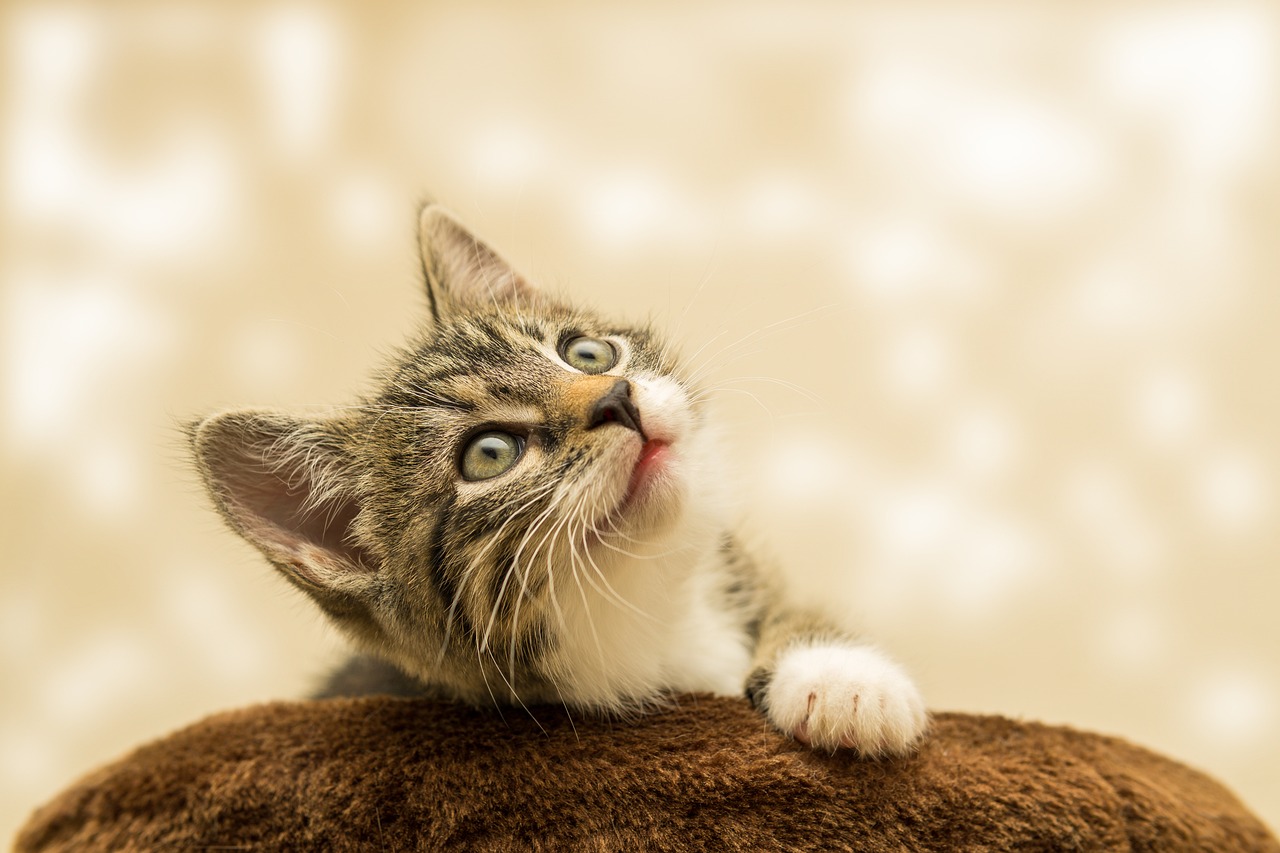
Supporting Your Pet During Events
When the skies rumble and fireworks light up the night, your furry friend can feel like they've just been thrown into a chaotic storm. It's essential to be their anchor during these tumultuous times. Just like a lighthouse guides ships through rough waters, your presence can provide comfort and reassurance to your pet. So, how can you effectively support your pet when loud noises strike?
First and foremost, stay calm. Animals are incredibly perceptive and can pick up on your emotions. If you’re anxious or panicked, your pet is likely to mirror those feelings. Instead, take a deep breath, put on a brave face, and project a sense of serenity. This doesn’t mean you should ignore their fear; rather, your calm demeanor can help soothe their nerves.
Creating a cozy, safe environment is also crucial. Designate a quiet area in your home where your pet can retreat when the noise begins. This space should be filled with their favorite toys, blankets, and perhaps even a piece of your clothing to provide comfort. Consider using a sound machine or playing soft music to drown out the thunderous sounds outside. A familiar and comforting atmosphere can work wonders in easing their anxiety.
During these loud events, engage your pet with activities that can distract them from the noise. Whether it’s a game of fetch, a puzzle toy filled with treats, or simply some gentle petting, keeping their mind occupied can help reduce their fear. It’s like giving them a lifeboat to cling to amidst the stormy seas of sound.
Another effective strategy is to use positive reinforcement. If your pet shows signs of calmness during a loud event, reward them with treats or praise. This helps them form positive associations with the noise, gradually reducing their fear over time. Think of it as teaching them that the loud noises aren’t always a threat but can sometimes lead to a fun experience.
Lastly, don’t underestimate the power of physical comfort. Cuddling with your pet or having them sit on your lap can provide an immense sense of security. Your touch can be incredibly reassuring, much like a warm hug during a chilly day. Sometimes, your presence alone is the best remedy for their anxiety.
Here are some common questions pet owners have regarding supporting their pets during loud events:
| Question | Answer |
|---|---|
| What should I do if my pet hides during loud noises? | Allow them to retreat to their safe space while providing comfort from a distance. Don't force them out, as this may increase their anxiety. |
| Can I use calming products during events? | Yes, calming products like pheromone diffusers or anxiety wraps can be helpful in reducing stress during loud noises. |
| How can I tell if my pet is scared? | Signs of fear include panting, whining, hiding, or attempting to escape. Be attentive to their body language. |
| Is it okay to comfort my pet during loud events? | Absolutely! Providing comfort and reassurance can help them feel more secure. |
Frequently Asked Questions
- What causes my pet to be afraid of loud noises?
Pets can be sensitive to loud noises due to a variety of reasons, including genetic predispositions, past traumatic experiences, and even their early life environment. Just like some people have a fear of heights, pets can develop a fear of thunderstorms or fireworks based on their unique experiences.
- How can I tell if my pet is scared of loud noises?
Common signs of noise-related anxiety in pets include panting, trembling, hiding, excessive barking, or even destructive behavior. If your pet seems unusually clingy or tries to escape during loud events, these could be signs that they are feeling stressed or scared.
- What can I do to create a safe space for my pet?
Designing a cozy retreat for your pet can make a world of difference. Consider using soft blankets, their favorite toys, and a quiet area away from noise. You might even want to play calming music or use white noise to help drown out the sounds that frighten them.
- Are there effective desensitization techniques for pets?
Yes! Gradually exposing your pet to loud sounds in a controlled manner can help reduce their fear over time. Start with low volumes and gradually increase them while rewarding your pet with treats and praise. This process can help create positive associations with the sounds they fear.
- What calming products can help my pet?
There are several calming products available, such as pheromone diffusers, anxiety wraps, and calming treats. These can provide comfort and help alleviate anxiety during stressful situations. Always consult your vet to find the best option for your furry friend.
- How can training help with my pet's noise anxiety?
Training can be instrumental in managing noise anxiety. By using positive reinforcement techniques, you can help your pet associate loud noises with good things, like treats or playtime. This helps them feel more secure and less afraid when they hear those sounds.
- When should I consult a veterinarian about my pet's fear of loud noises?
If your pet's fear of loud noises becomes severe or unmanageable, it’s a good idea to consult a veterinarian. They can provide medical interventions or recommend behavioral therapies that can help your pet cope better with their anxiety.
- How can I create a noise management plan for my pet?
A comprehensive noise management plan involves preparing for loud events and having strategies in place to help your pet cope. This could include creating a safe space, using calming products, and having a routine for comforting your pet during stressful times.
- What can I do to support my pet during loud events?
Your presence can be incredibly comforting for your pet during loud events. Consider staying close, speaking softly, and providing gentle petting to reassure them. Engaging them in a distraction, like a game or a favorite toy, can also help take their mind off the noise.

